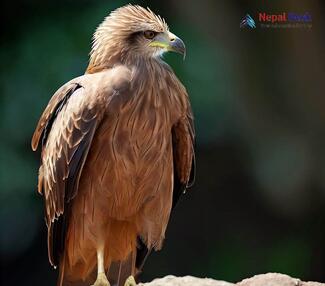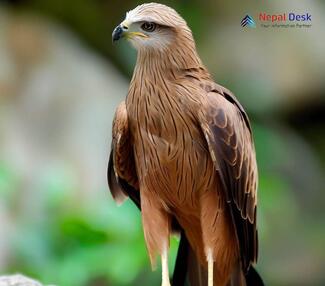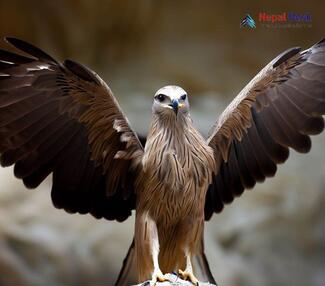The Black Kite, scientifically known as Milvus migrans lineatus, is a widespread hen of prey located in diverse elements of the world. It is thought for its adaptability and has effectively adapted to stay in both urban and rural environments. This species is thought to scavenge for meals and can often be seen hovering and gliding effects searching for prey or carrion.
In phrases of flying conduct, the Black Kite is a professional flier. It can soar at fantastic heights, frequently achieving up to numerous hundred meters above the ground. Its flight is characterised with the aid of swish glides and low flapping of wings. The period of its flights can vary depending on the reason, together with trying to find meals or migrating. One-time flying period can increase over long distances, as these birds are able to protecting enormous territories. The variety of the Black Kite spans across Europe, Asia, Africa, and elements of Australia.
Ecologically, the Black Kite performs an crucial role inside the environment. It serves as a scavenger, helping to easy up carrion and save you the unfold of illnesses. By consuming lifeless animals, the Black Kite contributes to the natural recycling of vitamins inside the surroundings. Additionally, this species might also manage populations of small rodents and insects, assisting to hold ecological stability in their habitats.
The Black Kite is a medium-sized raptor with a wonderful appearance. It has a wingspan of approximately 1.4 meters, and its frame length stages from 50 to 60 centimeters. The plumage of adult Black Kites is predominantly darkish brown to black, with a barely paler head and neck. The undersides of the wings regularly show a contrasting patch of light-colored flight feathers. In flight, the forked tail is a superb feature, performing deeply forked and displaying a special shape.
For beginner birdwatchers, it could be beneficial to look for cooperative conduct with other birds to discover the Black Kite. These birds are often seen in organizations, mainly at some stage in migration or even as foraging. They may associate with different raptors or birds of prey, along with eagles, vultures, or crows. Observing their distinct flying style, with elegant glides and occasional wing flaps, and their function forked tail can aid in recognizing the Black Kite within the field.
The Black Kite builds its nest the usage of twigs, sticks, and different substances. The nest is typically located in tall bushes, often near water bodies or in forested areas. The female is commonly liable for building the nest, even as the male assists in amassing substances. These nests are exceptionally large and robust systems, supplying a secure place for the birds to lay their eggs and raise their younger.
During the breeding season, Black Kites form monogamous pairs. They have interaction in courtship shows, which contain aerial acrobatics, soaring together, and changing calls. The woman generally lays two to three eggs, which both dad and mom take turns incubating. After hatching, both dad and mom participate in feeding and worrying for the chicks. The chicks fledge after numerous weeks and come to be impartial, even though they may still acquire some parental take care of a time frame.
In terms of feeding habits, the Black Kite is broadly speaking a scavenger and opportunist. It feeds on plenty of food resources, inclusive of carrion, small mammals, birds, insects, or even garbage in urban areas. It is often visible soaring and circling on the lookout for meals, the usage of its keen eyesight to discover capacity prey. This species is thought to scouse borrow meals from different birds, such as raptors or waterbirds, the use of its agility and opportunistic conduct.
Black Kites are recognised for his or her migratory conduct, with populations in some areas challenge long-distance migrations. These migrations are typically pushed through the provision of food and favorable climate conditions. Both male and female Black Kites take part in migration, with a few evidence suggesting that women may also migrate earlier or take unique routes. During migration, they will shape massive flocks and utilize thermal updrafts to preserve electricity in the course of lengthy flights.
The Black Kite is a versatile species that can adapt to various habitats, which includes forests, grasslands, wetlands, and urban areas. In Nepal, they may be discovered in more than a few habitats, consisting of lowland areas, riverbanks, agricultural fields, and open woodlands. Some hotspots for looking at Black Kites in Nepal encompass the Chitwan National Park, Bardia National Park, and Koshi Tappu Wildlife Reserve. These regions offer suitable habitat and ample food assets for the birds. When trying to find Black Kites, it's far beneficial to look near water our bodies, open areas, and tall timber wherein they regularly perch or construct their nests.
The Black Kite (Milvus migrans lineatus) has a wide worldwide range, inhabiting diverse regions throughout Europe, Asia, Africa, and Australia. They are recognised for their adaptability and may be located in diverse habitats including forests, grasslands, wetlands, and urban regions. Their distribution is encouraged by means of factors such as meal availability, nesting websites, and favorable climatic conditions.
Male and lady Black Kites proportion comparable bodily traits, making it challenging to differentiate between them based totally on look alone. Both sexes have similar plumage, with dark brown feathers, a forked tail, and a distinctive white head. Juvenile Black Kites have an extra mottled appearance with lighter-colored feathers, and gradually growing personal plumage as they mature.
Similar birds that could resemble the Black Kite include the Red Kite (Milvus milvus) and the Brahminy Kite (Haliastur indus). The Red Kite has a reddish-brown frame and a deeply forked tail, at the same time as the Brahminy Kite has a white head and chest, contrasting with its chestnut body. However, each of these species has awesome features that set them aside from the Black Kite.
The first-rate season to identify Black Kites varies relying on the area. In Nepal, they're usually resident birds, which means they can be found at some point in the 12 months. However, throughout the wintry weather months (November to February), their numbers can also increase because of migratory people joining the resident populace. To spot Black Kites, it's far more useful to search for them in open areas close to water bodies, inclusive of rivers, lakes, or wetlands. They can regularly be seen hovering high in the sky or perched on timber or application poles, scanning the environment for food.
The Black Kite is indexed as a species of Least Concern on the IUCN Red List, which shows that it isn't currently liable to extinction. The global population of Black Kites is taken into consideration solid, and they have a vast distribution. In Nepal, the Black Kite is a commonplace and ample species, taking place in diverse habitats throughout the USA. To boom the chances of recognizing them, it is advocated to discover areas with suitable habitat capabilities, including rivers, banks, agricultural fields, and open woodlands, wherein they may be discovered in flight or perched on bushes or utility traces.




